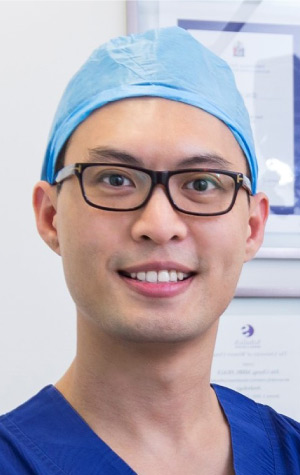
Meet Professor ChungAssociate Professor Chung is a urological surgeon specialising in andrology, microsurgical, and urological prosthetic surgery. Contact(07) 3832 1168 |
Penile curvature correction surgeriesPeyronie’s disease is not an uncommon condition affecting many men. It refers to a constellation of penile symptoms namely penile pain, length loss, curvature, fibrous plaque and ultimately sexual dysfunction. The treatment options depend on several factors such as duration of symptom, degree of penile curvature, presence of waisting (hour-glass deformity), size of penile plaque (fibrous scar tissue) and presence of erectile dysfunction. It is important to understand that penile curvature can reoccur again due to abnormal underlying penile tissue. Prof. Chung is recognised as the leading international expert on Peyronie's disease and penile reconstruction and serves as the Chair of the Peyronie's disease, Male Genitalia Trauma and Reconstructive Committee for the 5th International Consultation of Sexual Medicine (ICSM) by the International Society of Sexual Medicine (ISSM). He has published several guidelines on Peyronie's disease. Penile curvature could be corrected with the following surgery 1. Penile plication surgery
2. Penile graft surgery
3. Penile prosthesis
What preparation is required?Since the penile surgery is performed under general anaesthesia, you should have nothing to eat or drink for 6 hours prior to treatment. Regular medications can be taken with a sip of water with the exception of blood thinning agents (eg. warfarin, aspirin, clopidogrel) or non-steroidal anti-inflammatories which need to be stopped for 7-10 days. A mid-stream urine (MSU) test is required to ensure the urine is sterile before treatment is undertaken. What do I need to bring to surgery?
What happens in the operating room?You will meet your anaesthetist prior to surgery who will take a thorough medical history. Your procedure will be performed under general anaesthesia with an anti-microbial cover. The genital area will be shaved and an alcoholic povidine surgical antiseptic will be applied to minimise microbial skin colonisation. What are the risks?When performed by an expert surgeon, penile curvature correction surgery is considered a safe and durable procedure. Surgical complications depend on the complexities of your Peyronie’s plaque size and the type of curvature correction surgery. Some of the common postoperative complaints include:
Potential serious complications include:
What to expect afterwards?You are usually discharged the same day and you can remove the surgical dressing and have a shower the next day. You will be discharged with oral antibiotics antibiotics. At home, you should rest and avoid strenuous physical exertion for 4-6 weeks. During this time, normal spontaneous penile erection is common but any sexual activity is discouraged. Follow-upYou will have a follow-up appointment with Prof. Chung scheduled at 4-6 weeks postoperatively.
Meet Professor ChungAssociate Professor Chung is a urological surgeon specialising in andrology, microsurgical, and urological prosthetic surgery. Contact(07) 3832 1168 |





